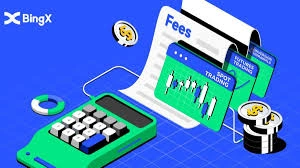BingX Futures Trading Fees
Table of Contents
When trading cryptocurrencies on BingX, understanding how fees work is just as important as choosing the right trading strategy. BingX is a global cryptocurrency exchange known for its spot, futures, and copy trading services. For traders using the futures market, fees can directly affect profitability — especially for those making frequent trades. This article explains BingX’s futures trading fees, how they are structured, and what you can do to reduce costs.
For more insights and updates on the latest trends in cryptocurrency, be sure to check out our Nifty Finances platform, which serves as your gateway to smarter financial decisions in the digital economy.

What Is BingX?
BingX is a global digital asset exchange that serves millions of users across more than 100 countries. It offers a range of trading options, including spot trading (buying and selling actual cryptocurrencies), futures trading (trading contracts that speculate on price movements), and copy trading (mirroring the trades of experienced traders). Designed for both beginners and advanced users, BingX provides a user-friendly interface, risk management tools, and competitive fees that make it a popular choice for crypto derivatives trading.
BingX Futures Trading Fees
Futures trading fees on BingX are the costs traders pay when opening or closing a position in a futures contract. These fees play an important role in determining overall returns, as even small percentages can add up over time — particularly for active traders.
In BingX’s futures markets, the main types of fees include trading fees (maker and taker fees), funding fees for perpetual contracts, and withdrawal fees. Each of these is charged differently depending on the type of trade and the market conditions.
Understanding these fees helps traders estimate potential costs before entering a position and compare BingX’s rates with those of other exchanges.
Maker and Taker Fees
BingX uses a maker-taker fee model, which rewards traders who add liquidity to the market and charges slightly higher fees to those who remove it.
- Maker Fees: These apply when you place a limit order that is not immediately filled. Since this order adds liquidity to the order book, BingX often charges a lower fee.
- Taker Fees: These apply when you place a market order or a limit order that is instantly matched and filled, removing liquidity from the market.
On BingX, maker and taker fees typically range from around 0.02% to 0.05%, depending on the specific futures product and the user’s trading volume. High-volume traders or VIP users may qualify for reduced rates.
This system encourages traders to use limit orders, which help stabilize market prices and reduce slippage.
Funding Fees
For perpetual futures contracts, BingX applies funding fees that are exchanged between traders — not paid to the exchange itself.
Perpetual contracts have no expiration date, so funding fees help keep the futures price close to the spot price of the underlying cryptocurrency. When the market is bullish, long positions usually pay funding fees to short positions, and vice versa when the market is bearish.
Funding rates can change throughout the day based on market conditions, interest rate differences, and price gaps between spot and futures markets. Traders should always check the current funding rate before entering a position, as it can impact overall costs and returns.
Deposit and Withdrawal Fees
When adding funds to BingX, deposits are generally free. However, withdrawal fees vary depending on the cryptocurrency and blockchain network used. For example, withdrawing Bitcoin (BTC) through the Bitcoin network may have a different fee than withdrawing USDT via the Tron (TRC20) or Ethereum (ERC20) networks.
These fees are not charged by BingX directly but are used to cover blockchain transaction costs. Always verify the applicable withdrawal fee and minimum amount before moving funds.
How to Reduce Futures Trading Fees on BingX
Traders can lower their overall trading costs on BingX by following a few simple strategies:
- Increase Trading Volume: Higher-volume traders often qualify for lower maker and taker fees through BingX’s tiered fee structure.
- Use Limit Orders: Placing limit orders can help you pay the lower maker fee instead of the taker fee.
- Watch for Fee Discounts or Promotions: BingX occasionally offers trading fee rebates, referral bonuses, or seasonal promotions.
- Join Loyalty or VIP Programs: If available, these programs reward consistent traders with reduced fees and exclusive benefits.
BingX offers competitive futures trading fees designed to suit both casual and professional traders. While the platform’s structure is straightforward, users need to understand how maker-taker fees, funding rates, and withdrawal costs affect their trading outcomes. By staying informed and applying simple cost-saving strategies, traders can manage fees effectively and trade futures on BingX with greater confidence and efficiency.
[…] BingX Futures Trading Fees […]